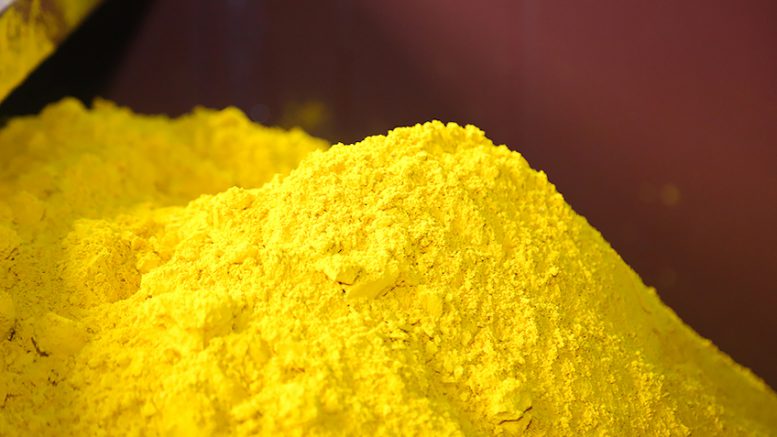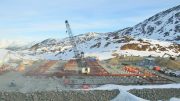Uranium prices surged from just over US$50 per lb. in April 2023 to more than US$100 per lb. by January 2024. Since then, there has been a moderate pull-back; uranium is now consolidating just above US$90 per pound.
So is it too late for investors to join the uranium bandwagon?
Well, that depends. Last year’s terrific run was driven by strong demand outlooks.
Uranium, the fuel for nuclear reactors, has benefitted from renewed interest in building global nuclear capacity. That’s partly due to the push to go green.
Here, nuclear power offers baseload power that’s carbon-free and reliable. Whether night or day, cloudy or windless, nuclear provides uninterrupted power.
But there’s another important side to the nuclear story: costs are rising.
Despite central bankers’ claims to the contrary, inflationary pressures continue to loom.
Rising tariffs and trade tensions between the world’s two largest economies, China and the United States, threaten to bifurcate global trade. This is highly inflationary and occurs just as the U.S. ramps up broad trade embargoes against Russia, one of the world’s most resource-rich countries.
Meanwhile, conflict could erupt at any time in the Middle East. A regional spillover could have drastic implications for global oil supply.
Echoes of 1970s
There are similarities between today’s inflationary environment and those from the 1970s.
Back then, the war in Vietnam helped drive copper prices to extreme levels, above US$15,000 per tonne. Meanwhile, OPEC oil embargoes in the early ’70s caused the price of oil to quadruple in the U.S.
As inflation rocketed higher, households sweated under a cost-of-living crisis. Governments were forced to find solutions.
However, these economic conditions laid the foundation for rapid nuclear energy expansion throughout the decade.
As a source of relatively cheap baseload power, nuclear power offered a proven long-term solution to the global energy problem. Nuclear was viewed as a long-term strategy to tackle the cost-of-living crisis.
The U.S. had fewer than 20 nuclear power facilities at the beginning of the 1970s. But by the decade’s end, the country had around 75 reactors in operation.
Not surprisingly, the commodity fuelling these reactors went skyward.
Adjusted for inflation, the price of uranium shot past US$200 per lb. by the late 1970s. A record that stands today.
According to a report by the OECD, the tripling of the uranium price between 1973 and 1975 was brought about by concerns over uranium supply shortfalls related to growing reactor orders and ongoing military requirements.
Today, uranium trades at less than half that price. It begs the question: Could there be another record high at some point in the 2020s?
If the 1970s offered a blueprint for today’s economy, it’s certainly possible.
Inflationary pressures loom large against the backdrop of war, tariffs, embargoes and threats to energy security. The political will to push nuclear will only increase because of these stresses.
The supply story
As the Canadian mining magnate Robert Friedland once said, the set-up for higher commodity prices consists of one-third demand and two-thirds supply. The outlook here for uranium is slightly less rosy.
Kazakhstan-based Kazatomprom (LSE: KAP), the world’s largest uranium miner, is set to resume full production next year, removing production cuts adopted during uranium’s prolonged bear market following the Fukushima nuclear disaster.
Meanwhile, the world’s second-largest miner, Cameco (TSX: CCO; NYSE: CCJ), is looking to ramp up its McArthur River operation in Canada. This will add a further 6,900 tonnes of uranium to the global feedstock.
According to GlobalData, worldwide uranium production is expected to grow with a compound annual growth rate of 4.1% from 2024 to 2030, with output reaching 76,800 tonnes by 2030.
That means rising output could defuse uranium’s long-term bullish outlook. That’s set to be dampened further as several new sources of supply hit the market.
Operators return online
Paladin Energy’s (ASX: PDN) restart of its Langer Heinrich uranium mine in Namibia is under way.
The mine is expected to deliver 6 million lb. annually at full production, enough to supply more than ten 1,000-megawatt nuclear power plants for a year.
Then there’s South Australia’s Honeymoon operation.
This was set to become Australia’s second operating in-situ recovery uranium mine well over a decade ago.
But the timing was unfortunate; production kicked off alongside the infamous Fukushima disaster in 2011.
Operations at Honeymoon were suspended just two years later due to falling uranium prices.
In 2015, Boss Energy (ASX: BOE) acquired the project and finally recommissioned the mine, with production resuming earlier this year.
Then there’s the Kayelekera uranium project in Malawi. Its new owners, Lotus Resources (ASX: LOT), also plan to bring the mine out of care and maintenance.
So why is this a potential threat to the uranium market?
Fully permitted mines with infrastructure already in place means several operations could come online simultaneously, easing any potential supply squeeze driven by demand.
Investor-friendly market?
For now, investors remain laser-focused on the demand outlook. That means there’s still plenty of room to ride momentum in the uranium market.
In the long term, though, demand must overcome higher production threats.
A cost-of-living crisis like in the 1970s could be the high-demand scenario that brings more reactors online and fuels more demand for this commodity.
— James Cooper runs the commodities investment service Diggers and Drillers. You can also follow him on X (Twitter) @JCooperGeo





Be the first to comment on "Investors should heed growing supply after uranium’s recent runup"